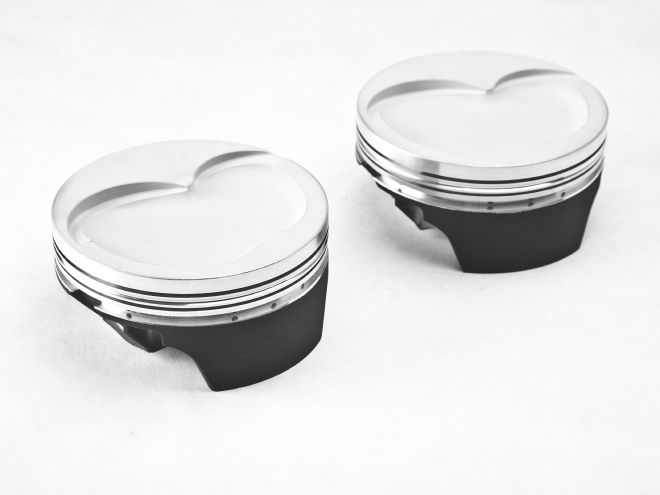
It’s the classic racer’s dilemma. There’s absolutely nothing wrong with the fancy forged pistons you already have, but opening up the bores just a tad during the next short-block rebuild means that they’re going to be too small. Talk about major suckage. No one wants to spend $500 to $1,000 on a new set of pistons just to fill in a few thousandths of an inch of additional clearance. Making matters worse, even if the new pistons don’t require rebalancing the rotating assembly, at the very least you’ll have to pay a machine shop to give the parts a whirl on the balancer to check things out. Like a wise man once said, mo’ money, mo’ problems. Fortunately, there’s a better way. For a fraction of the price of a new set of pistons, Line2Line Coatings can apply a trick skirt coating that literally fills in the gaps.
We know what you’re thinking. What kind of cockamamie solution is that, and how can it possibly hold up under the thermal and mechanical stresses of today’s performance engines? “Abradable powder coating (APC) is made from plastic and graphite. We have different levels of hardness for different applications,” Andy Suman of Line2Line Coatings explains. “Engine builders tell us the bore diameter and power level of their combination, and we apply up to .010-.015-inch of APC coating to the piston skirts to get a snug fit. We can apply thinner coatings as well. After the motor is first fired up, the pistons grow and the coating abrades in areas that are too tight. Once there is room for an oil film to form, the coating stops wearing. The gage point wears the most, and more coating thickness is retained elsewhere on the piston skirt.”
In concept, the process isn’t much different than a piston ring conforming to the surface of the cylinder wall during the break-in period of a fresh engine. As such, in addition to salvaging an undersized piston, APC coatings can also reduce wear and stabilize the pistons. “Once the coating abrades, each piston in each bore now has the absolute minimum clearance all over the skirt. As a result, the pistons run with less secondary motion and on a perfect oil film,” Suman adds. “APC safely reduces gage point clearance, and more importantly, it reduces the amount of cam (taper) and profile on the skirts. Consequently, piston rock is reduced, so the rings stay squarer to the bore throughout the entire four-stroke cycle. Since the rings move less, they seal cylinder pressure and control oil more effectively. Rings also wear less and last much longer. The bottom line is that APC settles the piston down so the rings work better and last longer.”
Nevertheless, APC coatings aren’t mainstream enough just yet hush the doubters. So the obvious question is, how well does it work? “APC has been successfully used in naturally aspirated and heavy-duty power adder engines in drag applications. We haven’t yet found the upper limit of the coating,” says Suman. “APC has performed well in diesels and lots of experimental think-tank engines as well. We have even tested it on a nitromethane-burning engines.”
Best of all, the APC process is extremely affordable. Line2Line will apply a coating up to 0.006-inch thick for just $30 per piston. To put it to the test, CHP had Line2Line coat a set of pistons for our supercharged 481ci LSX drag radial engine that’s currently being built by our friends at the School of Automotive Machinists. Part of preparing this beastly 2,000-plus horsepower combination for battle involved solid-decking the RHS block for additional rigidity. Unfortunately, the process distorted the 4.125-inch bores ever so slightly, which required honing them to 4.130 inches in order to square them back up. Since we had already ordered up a set of forged 4.125-inch Diamond pistons, we opted to try out Line2Line’s APC coating instead of dropping more money on a new set of slugs.
Based on all the facts we’ve gathered, the coated pistons should work great in our high-boost combination. However, there’s nothing like a good old fashioned dyno and track test, so stay tuned for the complete engine build in the coming months to see how things transpire.
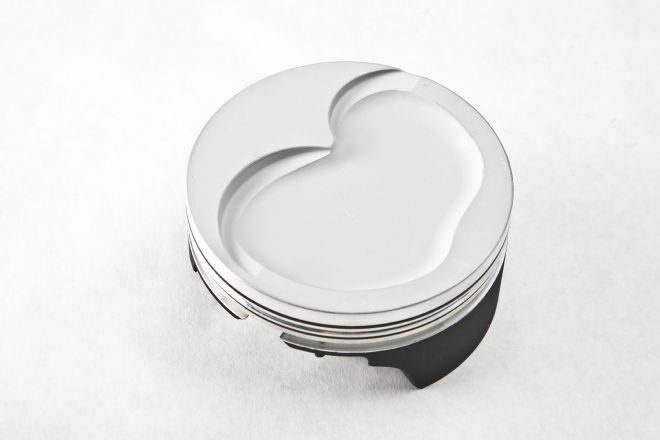
In addition to applying APC to the skirts of our Diamond forged pistons, Line2Line treated the crowns with a thermal barrier coating. Unlike APC, the purpose of the thermal barrier coating is to reflect heat into the combustion chamber, which reduces heat transfer into the piston and increases horsepower.
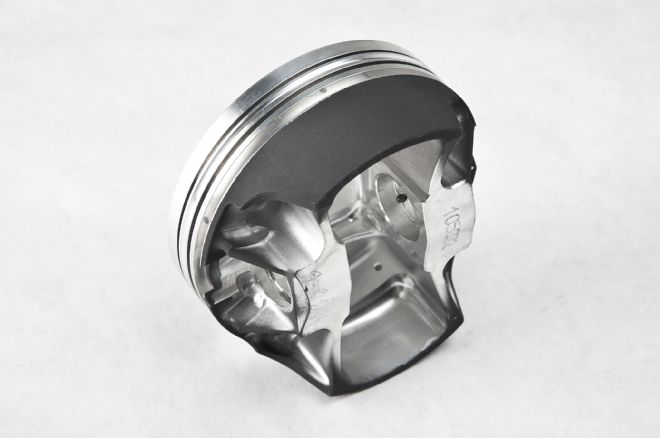
For $30 per piston, Line2Line can apply up to a 0.006-inch-thick APC coating onto the piston skirt. Thicker coatings are also available for a tad more money. Typical turnaround time ranges from 5-10 days.
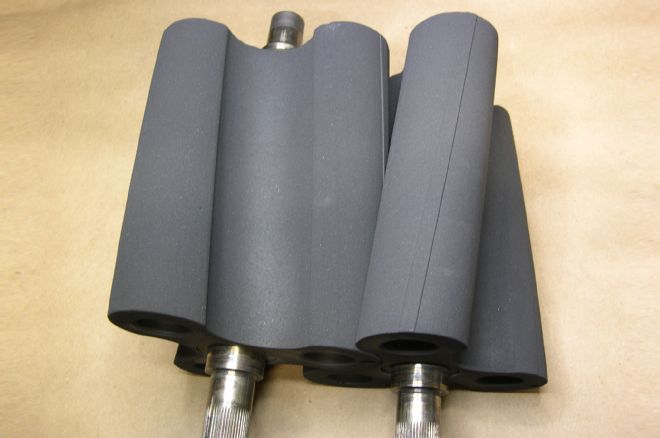
Since APC coatings provide clearance control in addition to oil film stability, applications extend far beyond pistons. When applied to supercharger rotors, it reduces friction and operating temperature for improved compressor efficiency. For these clearance-critical applications, the coating can be controlled to as thin as 0.0007 inch.
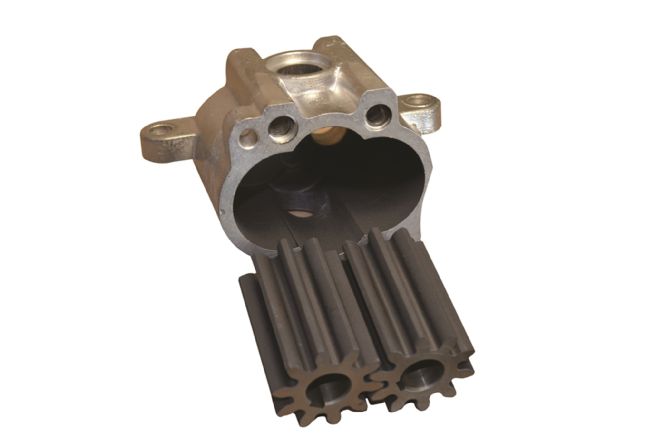
While worn oil pumps are typically replaced, Line2Line says APC coating the gears tightens up the clearances and can restore pressure. The coating is also resistant to foreign particles, which is important considering that oil entering the pump is not filtered.
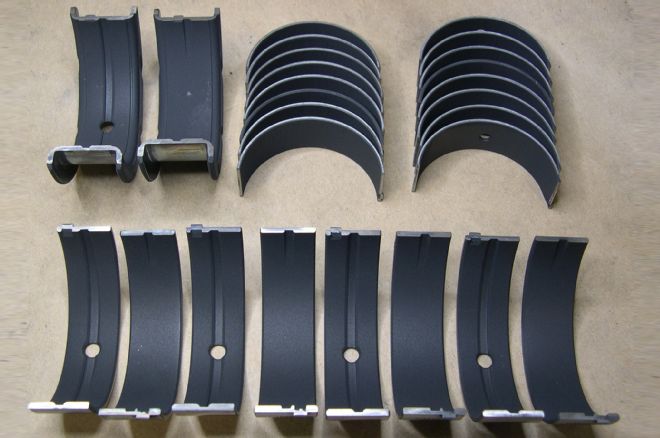
APC coatings have been used with great success on bearing surfaces where oil film stability is critical. Other applications include vacuum pumps, distributor gears, and shock absorber housings.